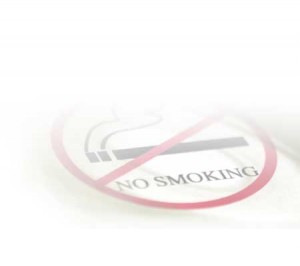By Stephanie Shapiro
She and Billing are quick to point out that palliative care does not equal hospice care, a common misconception among patients and clinicians alike. “Palliative care is about empowering patients and their families with knowledge, so they are informed and able to determine their goals of care,” she explains, recalling a case where both the palliative care team and the patient’s doctors recommended hospice as the best choice. The patient, however, wished to continue chemotherapy. Respecting and supporting that decision and managing the physical symptoms or side effects of chemotherapy became the team’s goal. “It is not only about end-of-life issues, it is about quality of life and how to live better with cancer,” says Billing.
When Karin Taylor, a clinical nurse specialist in Child and Adolescent Psychiatric and Mental Health, came to work in the Department of Psychiatry in the mid-1980s, she remembers walking off the elevator and into “a haze of smoke.”
The patients smoked everywhere except in bed. The nurses, including Taylor, a clinical specialist on Meyer 3, also smoked.
Over the decades, the air has cleared on Meyer units as cigarette breaks were gradually restricted. And in February of this year, all of Meyer went smoke-free, courtesy of a campaign spearheaded by Taylor.
“We are doing the patients a horrible disservice by not educating them about the damage caused by tobacco,” says Taylor, who kicked the habit 20 years ago. “For too long in psychiatry, there was the thought, ‘Oh, gosh, these people have lost so much in their lives; we don’t want to take this away from them.’”
 But permitting patients momentary relief has long-term disadvantages. Psychiatric patients die 25 years earlier than the general population as a result of medical complications, many of them related to smoking, Taylor says. While primarily a health measure, the ban also eliminated the possibility of violent responses from patients denied daily cigarette breaks granted to others.
But permitting patients momentary relief has long-term disadvantages. Psychiatric patients die 25 years earlier than the general population as a result of medical complications, many of them related to smoking, Taylor says. While primarily a health measure, the ban also eliminated the possibility of violent responses from patients denied daily cigarette breaks granted to others.
Before the smoking ban took effect, Taylor and colleagues led education efforts for staff and patients. Concerns expressed in focus groups that the tobacco prohibition would be unfair or incite violence were allayed. The department’s patient education committee and smoking task force also made sure that admission order sets would provide patients with adequate nicotine patches and gum. Nurses were also encouraged to provide plenty of hard candy, fruit, music, stress balls, and fresh air breaks to help patients cope with withdrawal.
With the imminent smoking ban in the Meyer 1 courtyard and pending legislation to ban smoking on sidewalks around hospitals in Baltimore City, the hospital can look to Psychiatry’s example, says Judith Rohde, ScD, RN, Director of Nursing for Neurosciences and Psychiatry.
 No. 1 Rankings for the School of Nursing and a Pipeline to the “Best Jobs”
No. 1 Rankings for the School of Nursing and a Pipeline to the “Best Jobs” Best of On The Pulse 2023
Best of On The Pulse 2023 Dr. Bonnielin Swenor, Inaugural Endowed Professor of Disability Health and Justice
Dr. Bonnielin Swenor, Inaugural Endowed Professor of Disability Health and Justice Celebrate National Hispanic Heritage Month
Celebrate National Hispanic Heritage Month Nurses Educational Funds (NEF) Awards Scholarships to Six JHU School of Nursing Doctoral Students
Nurses Educational Funds (NEF) Awards Scholarships to Six JHU School of Nursing Doctoral Students






